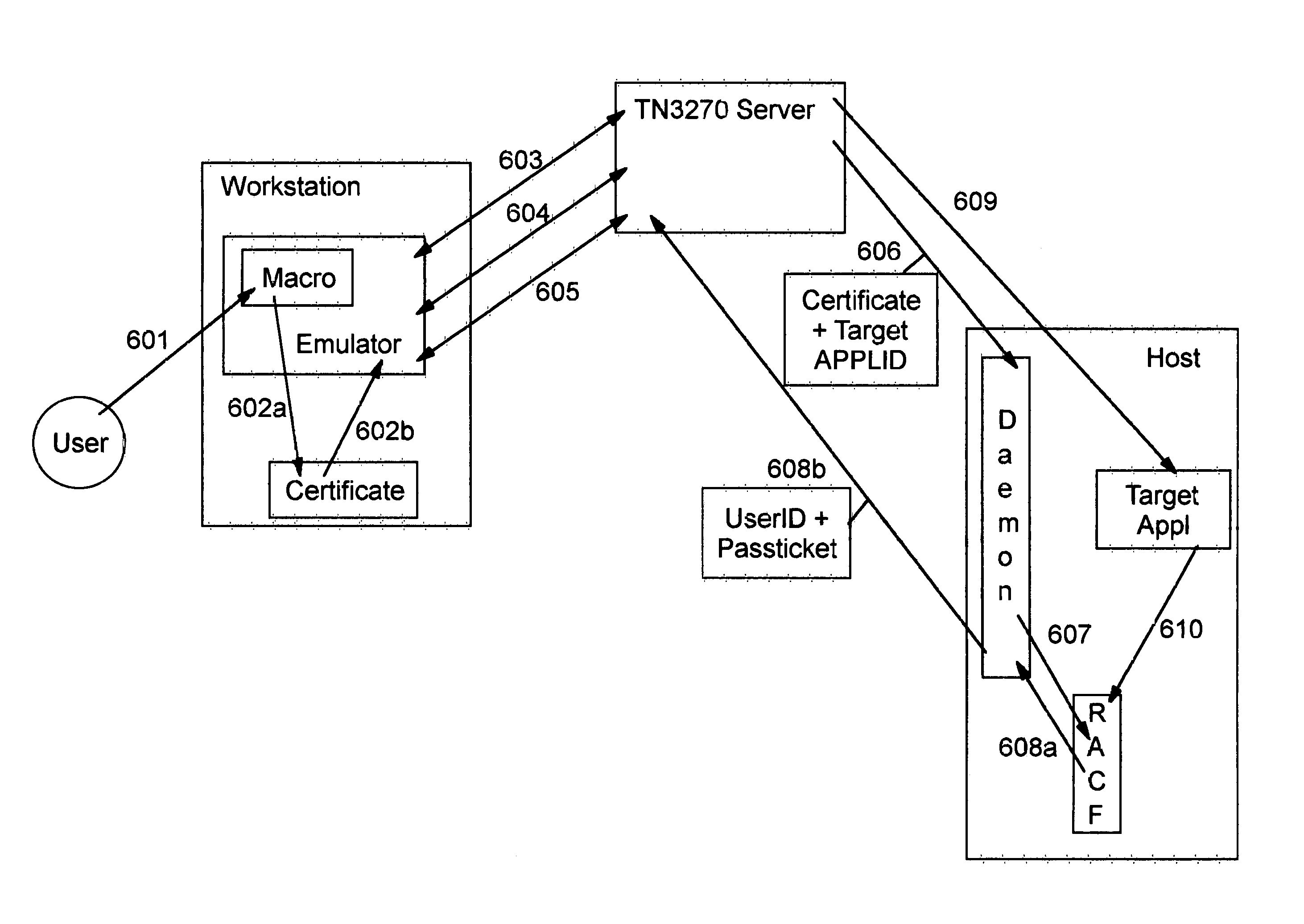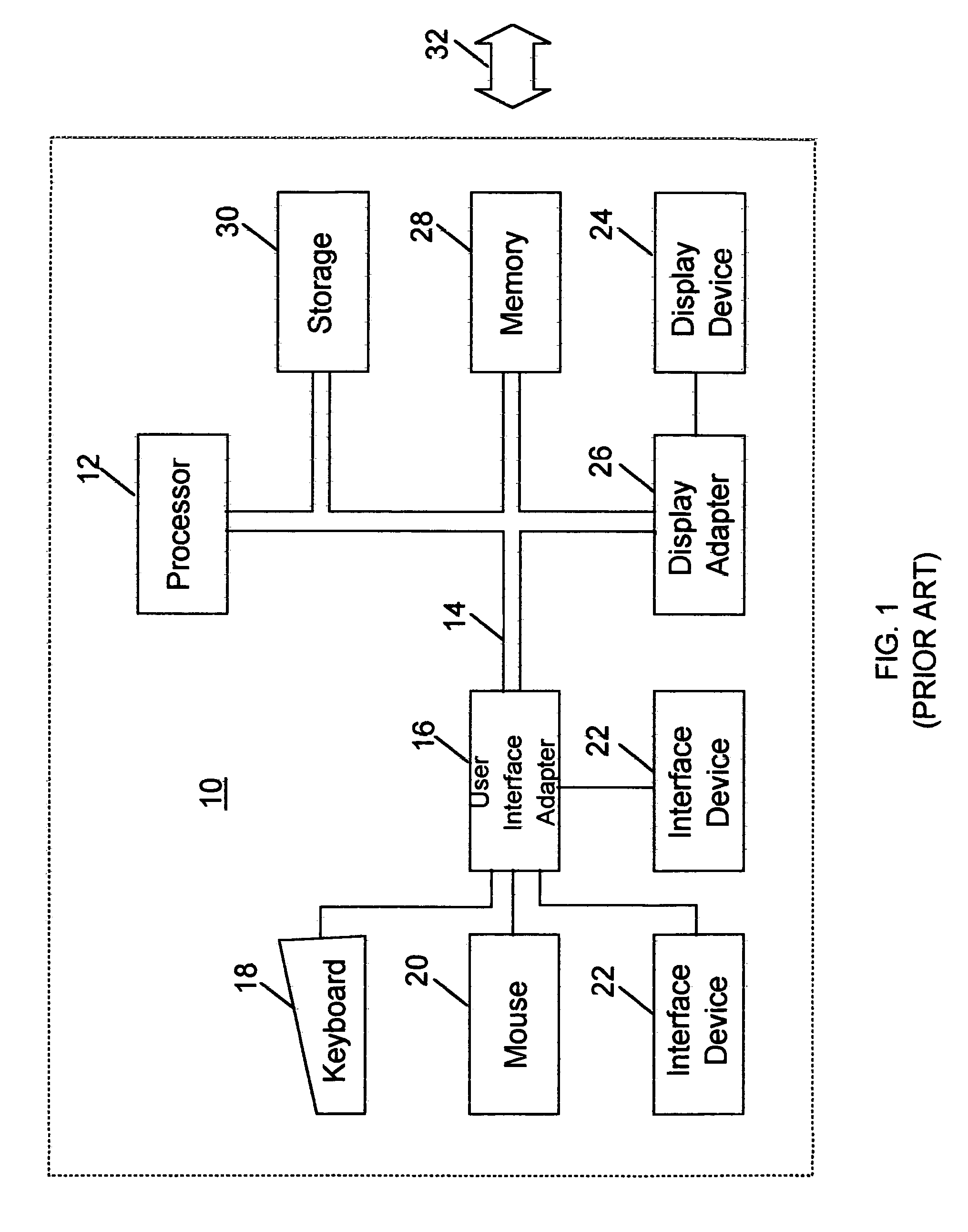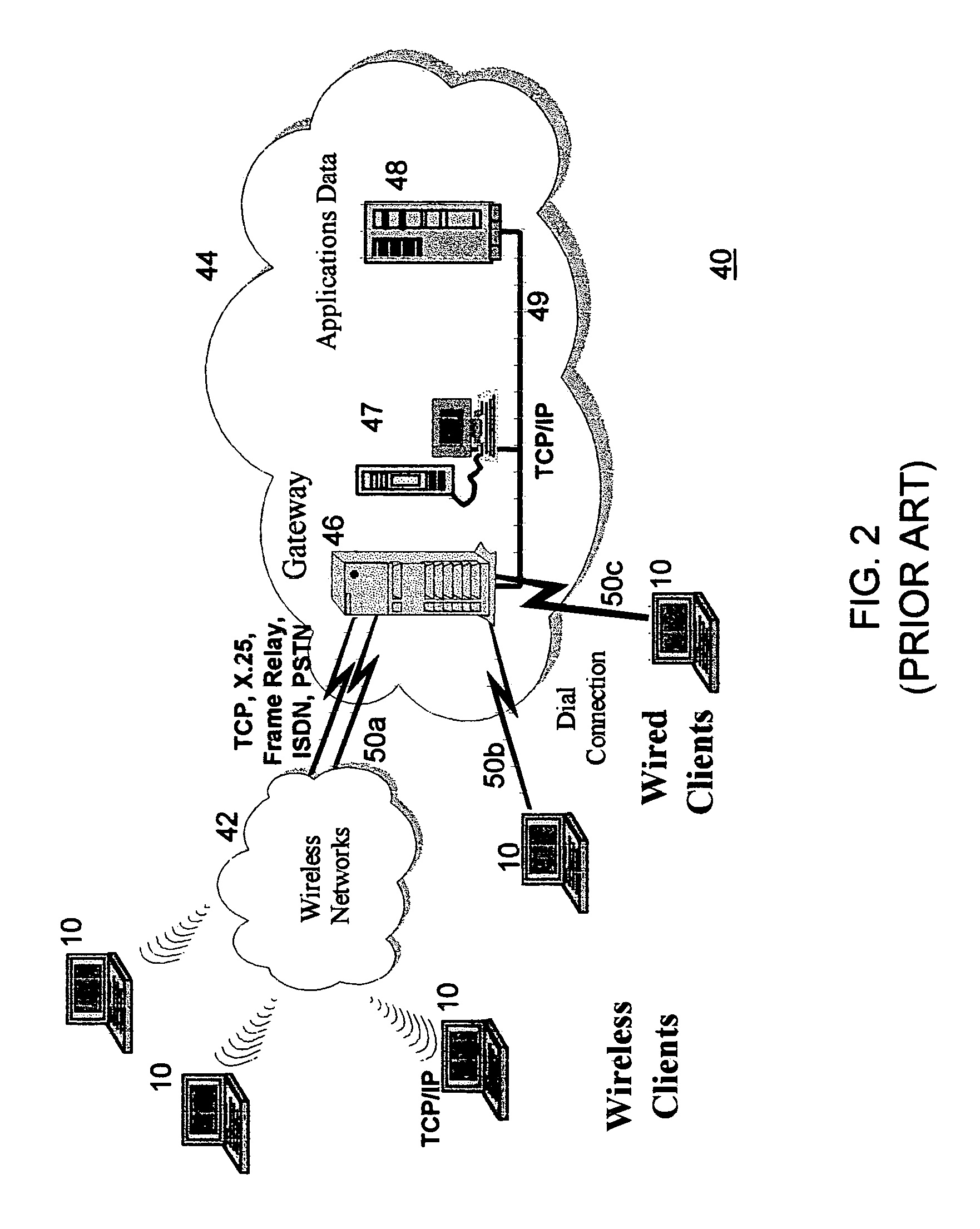Technique for handling subsequent user identification and password requests with identity change within a certificate-based host session
a certificate-based host and user technology, applied in the field of computer systems, can solve the problems of inability to provide secure access to legacy mainframe host data and applications from modern personal computer-based (“pc-based”) applications, the user may not be able to change the identity of the user, and the double entry of identifying information is not only redundant, but tedious. the effect of user identity chang
- Summary
- Abstract
- Description
- Claims
- Application Information
AI Technical Summary
Benefits of technology
Problems solved by technology
Method used
Image
Examples
first preferred embodiment
[0060]FIG. 4 depicts a representative sequence of message flows that may occur when the first preferred embodiment of the present invention is used to enable a subsequent sign-on for a user within the scope of a secure host access session. To begin the process depicted in FIG. 4, the user of emulator client 401 requests establishment of a secure host access session, for example by clicking on an icon that will invoke a host access macro. In response, the client software initiates a secure session (which is an SSL, TLS, or equivalent session in all of the preferred embodiments of the present invention) using an X.509 certificate, as shown at 405. (“TLS”, or Transaction Layer Security, is an SSL follow-on having similar messages and capabilities.)
[0061]Typically the user will be prompted to identify the certificate that is to be used for this session, as a particular user may have multiple certificates. As stated above, it is assumed that the digital certificate is stored such that it...
second preferred embodiment
[0083]FIG. 8 depicts a sequence of message flows that may occur when the second preferred embodiment of the present invention is used to enable changed user credentials to be provided during a subsequent sign-on within the scope of a secure host access session. The message flows from 805 through 850 are identical to those in FIG. 4 which are numbered 405 through 450, and provide for establishing a secure host access session in which a user interacts with a first host application. Element 910 of FIG. 9 depicts the protocol message flows which correspond to message 810 of FIG. 8 and which may be used during negotiation of Telnet services between client 801 and server 802 in this second preferred embodiment. These protocol messages are described in more detail below.
[0084]In FIG. 8, receipt of message 855 indicates that the client wishes to use different credentials. As previously discussed, this message may be sent to enable a previously-authenticated user to use different credentials...
PUM
 Login to View More
Login to View More Abstract
Description
Claims
Application Information
 Login to View More
Login to View More - R&D
- Intellectual Property
- Life Sciences
- Materials
- Tech Scout
- Unparalleled Data Quality
- Higher Quality Content
- 60% Fewer Hallucinations
Browse by: Latest US Patents, China's latest patents, Technical Efficacy Thesaurus, Application Domain, Technology Topic, Popular Technical Reports.
© 2025 PatSnap. All rights reserved.Legal|Privacy policy|Modern Slavery Act Transparency Statement|Sitemap|About US| Contact US: help@patsnap.com



